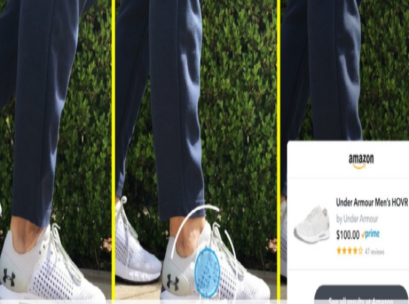 It was only a few years ago West Australian retailers were arguing for the right to trade on Sundays and public holidays. How the world has changed, and changed quickly.
It was only a few years ago West Australian retailers were arguing for the right to trade on Sundays and public holidays. How the world has changed, and changed quickly.
Now, we have Snapchat announcing a partnership with Amazon for mobile commerce, where potential buyers can simply point their smartphone camera at a barcode or product within Snapchat, and once the app recognises them, they can be directed to Amazon to buy the product.
Instagram, too, will be using its successful shopping features on Instagram Stories. More than 300 million Instagram users use Instagram Stories every day, which is a significant consumer base for retailers to access.
With two of the world’s most popular social media apps increasing their push into mobile commerce, brands will need to be careful as to how they market their products and services, and what influencers they use to sell their services.
“There have been a few attempts to handle the end-to-end transaction within the social media environment, much like a marketplace,” says Mark Baartse, chief marketing officer, Showpo.
“I haven’t seen any great successes here, however there are deeper integrations happening. Pinterest is making some interesting inroads in the shopping space, and of course Instagram Shopping Tags have been around on posts for a few months, and on Stories as of last week. These are great new ways to reach customers who have already expressed an interest in your brand.”
But Baartse warns there are pitfalls here unless brands are careful, and costs are set to rise.
No free launch
“Social media isn’t free,” he says. “Instagram is for now, but that will change soon when Facebook starts charging businesses
and shopping posts. They aren’t building all these features into Instagram out of the kindness of their heart!
“At that point it needs to be considered like any other marketing channel to work out what the return on investment is compared with
other channels. It’s also very time-consuming to do well, and people often underestimate this.”
Choosing brand ambassadors is equally important. The values of the brand and the influencer need to marry up to ensure a
successful relationship.
“Choosing brand ambassadors is largely about brand alignment – who fits in with the company brand positioning, and also for any
particular campaign running,” Baartse says. “Measuring the impact of brand ambassadors is hard to do, especially on Instagram where
there’s no clickable links. Engagement metrics remain the front line, but they are a poor proxy for revenue numbers.”
Creative storytelling
Nonetheless, Instagram intends to forge ahead and they have a large shopping base already, with 53 per cent of young Australians buying a product based on what they have seen on the platform and 80 per cent of Instagrammers following a business
on Instagram.
“Shopping in Stories provides another easy step for our followers to shop or discover pieces, as well as insights,” says Mel Carrero,
Spell & The Gypsy PR and marketing manager. “We have noticed fewer questions around pricing and product, as it is an easier way
for them to see the pieces, so the connection is more convenient.”
For businesses and brands, shopping tools on Instagram introduce a new level of creative storytelling and consumer
engagement on mobile. Plus, they make it easy for customers to shop whenever they feel inspired.
Surprisingly, 63 per cent of Australian SMEs say Instagram has helped increase sales for their business, while 25 million businesses
are using business profiles worldwide.
“There’s still a lot of room for innovation in the mobile space – in social, on a responsive site, and in apps,” Baartse says. “I think
there’s some really exciting and engaging user features still to come.
“Showpo is social and mobile to our core! Almost everything we do has a social component, and we’ve been mobile first for years.
We find it’s an awesome way to connect with our customers in a way that’s meaningful to them.”
Search and shop
So does Snapchat, and starting this week, a small percentage of Snapchatters in the US will be able to search and shop for products
on Amazon – right from the Snapchat camera. This rollout is to test, learn and iterate.
All users will have to do is just point the camera at a physical product or barcode, and then press and hold on the camera screen
to get started. When the item or barcode is recognised, an Amazon card will appear on screen, surfacing a link for that product or similar ones available on Amazon.
Consumers will be able to make a selection to be redirected to the Amazon App (if they have it installed on their device) or an
Amazon mobile site, where they can complete their purchase or keep browsing.
Snapchat’s goal is for the camera to be a type of cursor – see, scan and shop. Snapchatters seem to be mobile shoppers and
impulse shoppers, with US Snapchat users 20 per cent more likely than non-users to have made a purchase from a mobile device, and
they are also 60 per cent more likely to make impulse purchases than non-users.
Author: Louis White





